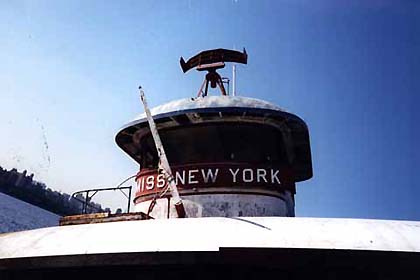
In a city as dynamic and space conscious as New York, when a building no longer serves its intended function, it is torn down and replaced. But between the period of a property's service and its time of reassignment, the building sits abandoned and decaying. The ability to abandon and reshape what no longer serves our needs gives New York its prominence the city adapts, it progresses, it moves on. Riverboat Junction was a means to provide closure for one of the most visible abandoned structures on New York City's waterways.
Riverboat Junction announces itself as a place not to be overlooked by day or night. How focused must we all be not to notice a full-size passenger ferry half-sunk in the Hudson River? Yet the ferry, as well as the decaying warehouse and pier to which it is tethered, sits forgotten and obsolete, as anonymous as the people who built the structures and worked in them during their prime.
The blackened backdrop of the night sky created the environment for light to reveal the forms and brilliance of a building's and a ferry's facade. A lit structure in the New York cityscape emerged from the darkness, illuminated by a billion-candlepower light that shone its beam from across the Hudson River. She stood alone in an evolutionary state of decay. The building's aging concrete is cracked and stained with water, brilliant forms of rust marbleize the surface of steel beams, an undisturbed dust settles upon every leveled surface, thousands of broken windows, damp and cool, still and silent, souls are in the air.


